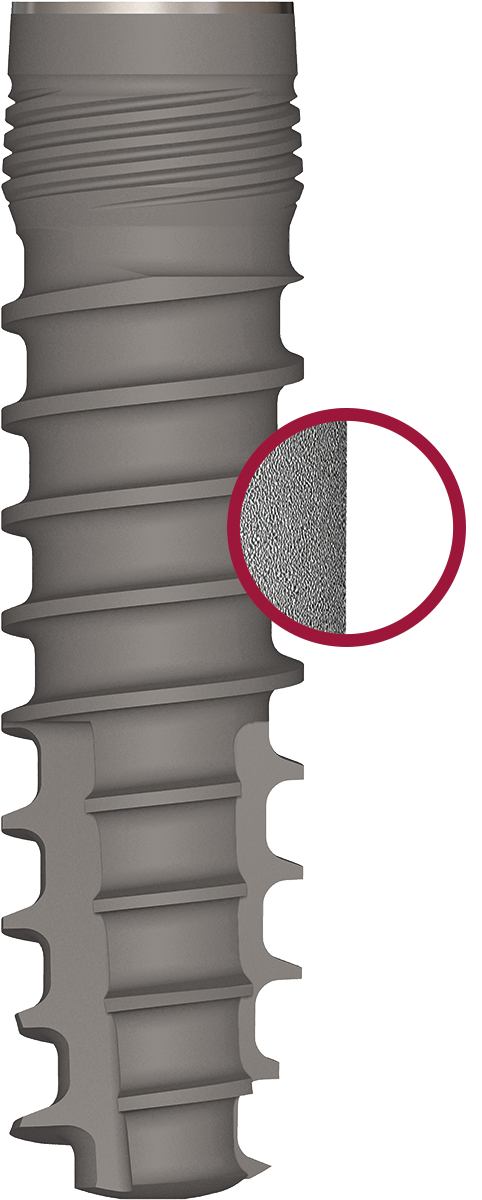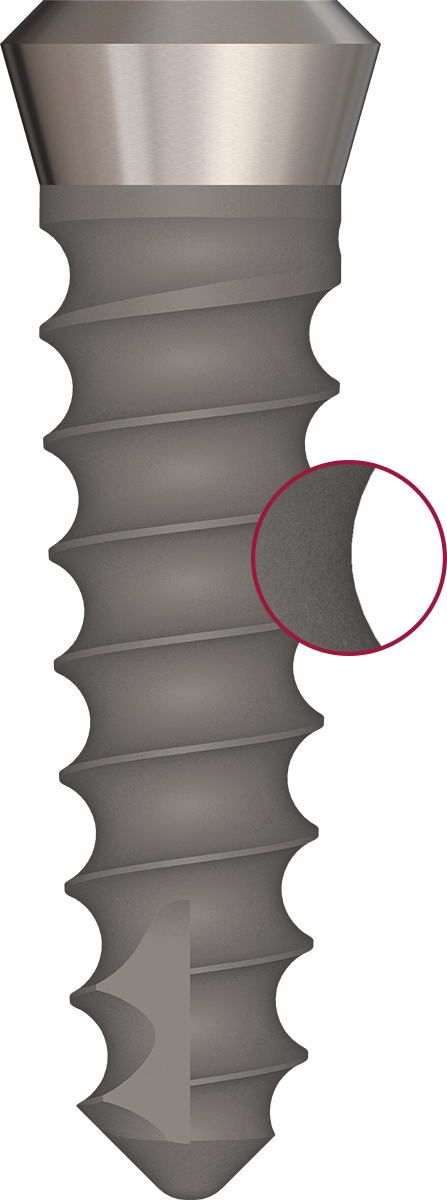A Simple Way to Avoid Periimplantitis
We have shown on this website (based on scientific evidence, knowledge about the bone`s physiology, and decades of experience) that the wrong design and unbiological surface characteristics of conventional 2 stage implants are responsible for the persistant infection developing after rough implant surfaces of large diameter-implants are exposed to a bacterial attack in the oral cavity.
In addition: the gradual bone loss called «atrophy» is unavoidable. Whenever teeth are extracted both nutrition and functional stimulation of the bone surrounding the teeth are lost. This inevitably leads to bone loss. For a long time the protagonists in conventional dental implantology made the public believe that the implants (i.e. conventional 2 stage implants) will maintain the bone and prevent atrophy. We know today that this claim is not true. Bone remodels and atrophies even around well integrated dental implants.

Not recommended rough 2-piece implant with large diameter

Not recommended rough 2-piece implant with large diameter

Recommended implant with very low probability of development of periimplantitis
The opposite is actually true: we know very well from orthopaedic surgery that stiff implants provide a stress shielding effect and massive bone loss after implant placement is unavoidable as a result. This is why trauma implants are removed after the bone's healing and whenever possible. Just look at the elementary truths science has to offer! They also apply for dentistry.
Unfortunately, most dentists in many countries use such 2-stage implant designs. University teaching and the implant manufacturers' marketing has created a public opinion which suits their plans for creating revenue. Although we know today that up to 100% of these implants will be affected by periimplantitis sooner or later, 2-stage implants are frequently used and considered «state of the art».
At the same time, the big congresses for implantologists often deal with nothing besides this disease and how to «fight it». But there is no way to fight against the nature of bone. With the amount of placed implants increasing annually, the expected tsunami of damaged patients grows bigger and bigger.
A subsequent problem associated with periiimplantitis and bone loss is the fact that there is usually not enough bone for a 2nd treatment. Hence, many of the affected patients (if they can even afford and dare to undergo a 2nd treatment) have to undergo risky, expensive and time-consuming invasive bone buildups before another set of 2-stage implants can be placed. Of course, these implants will sooner or later be affected by the same problem. Placing more 2-stage implants will not solve the problem, it will aggravate it.
Albert Einstein said: Solving the problem with means which have created it is never a successfull attempt. The result will be the same.
This simple truth also applies here.
But as usual, the solution to the problem is decidedly simple. To avoid additional bone loss and infections we can:
- use single-piece implants which tend to create less bone loss
- use implants with a thin and polished mucosal penetration diameter
- use completely polished implants, which will under no circumstances ever allow periimplantitis to occur




